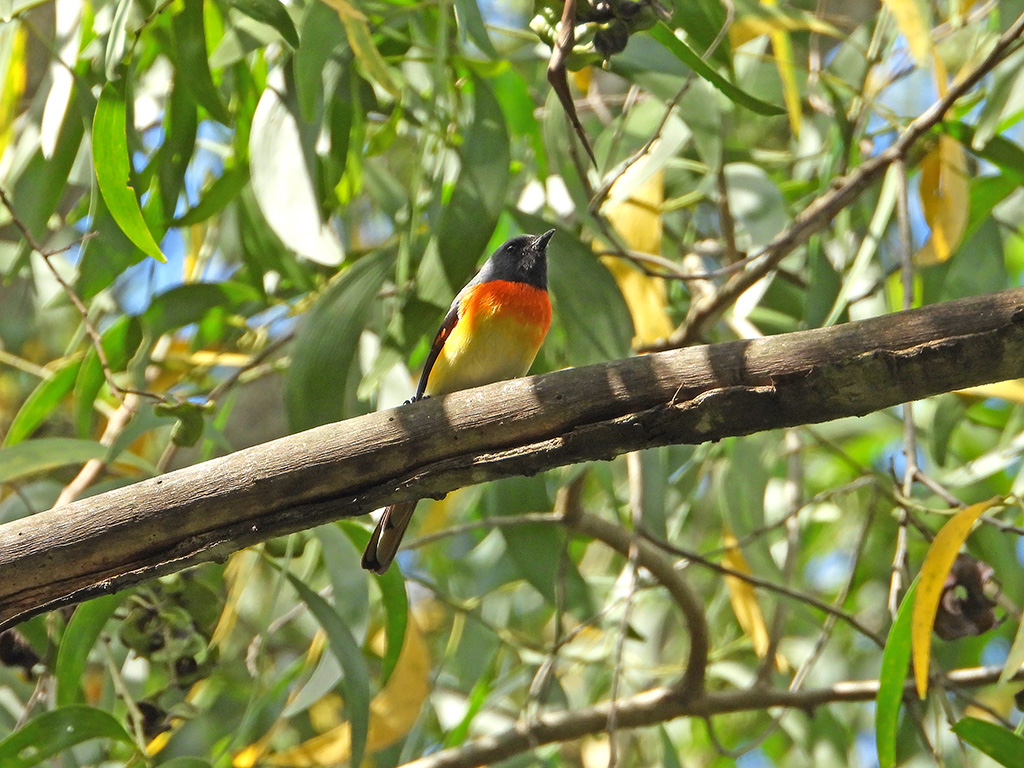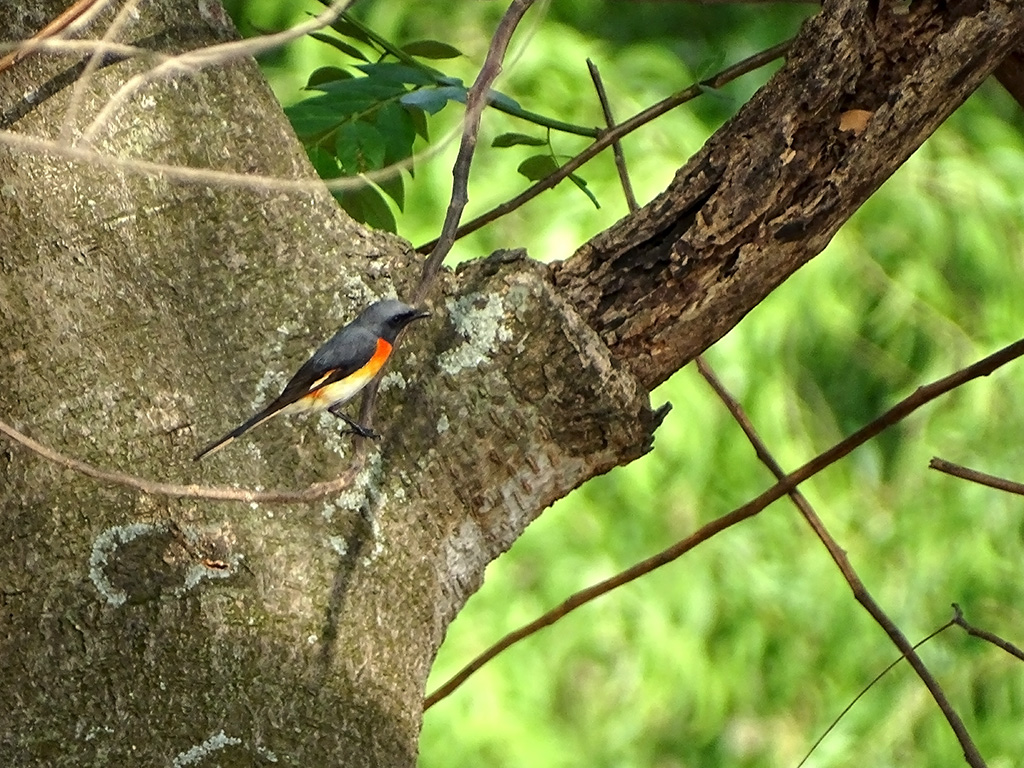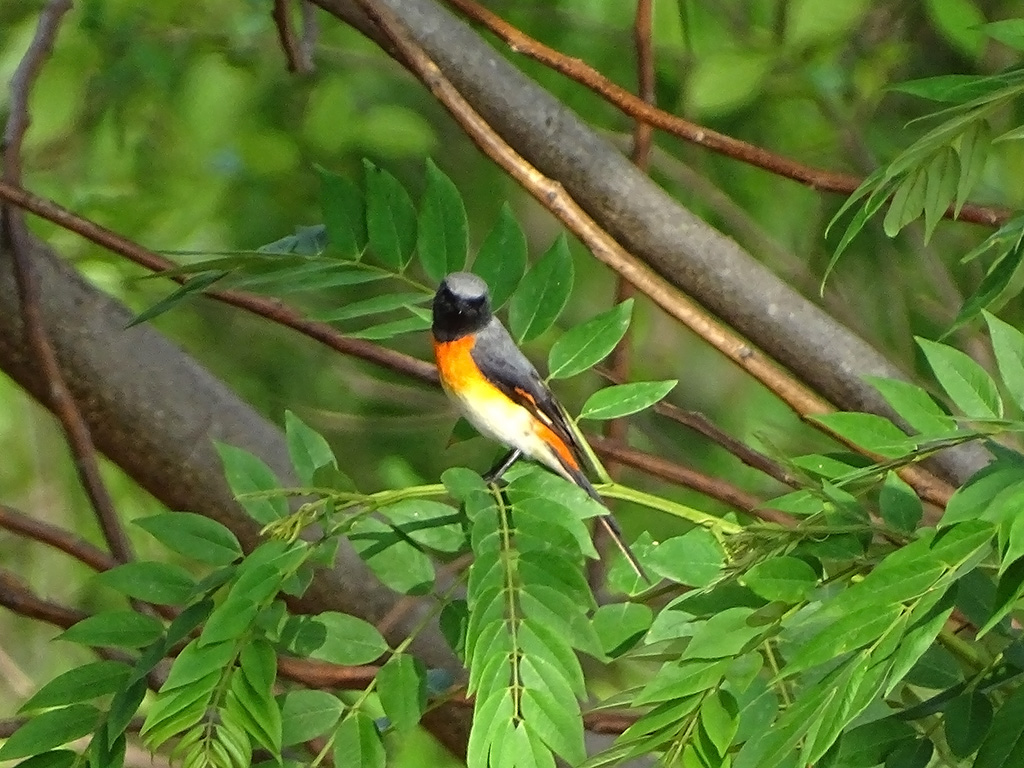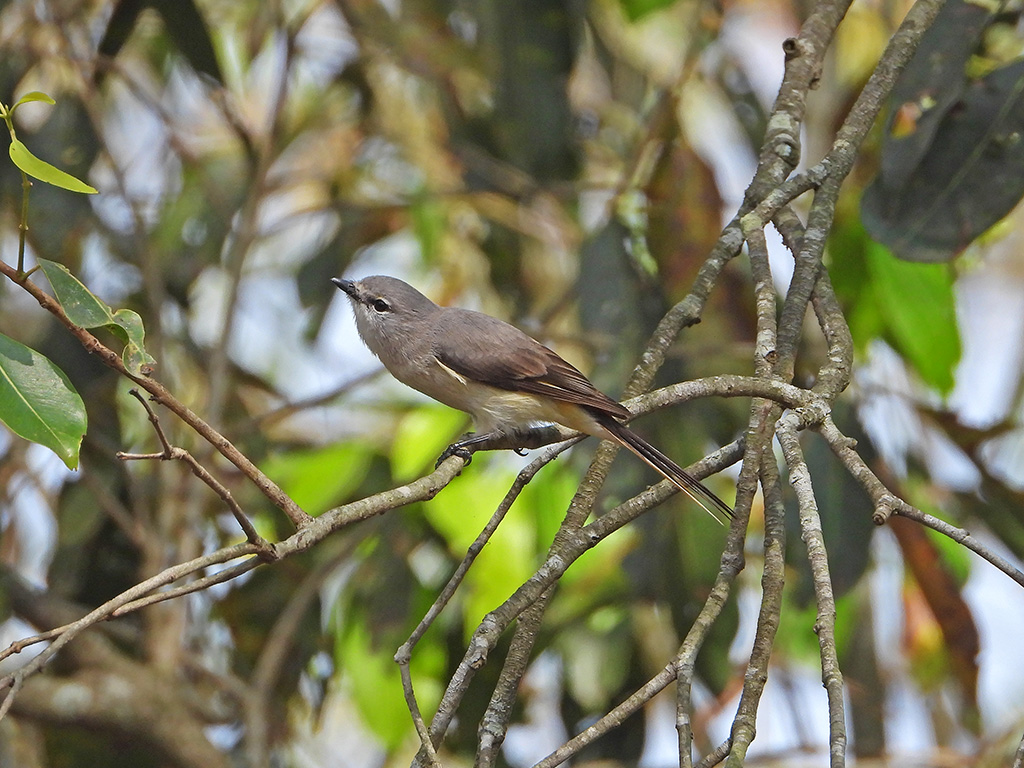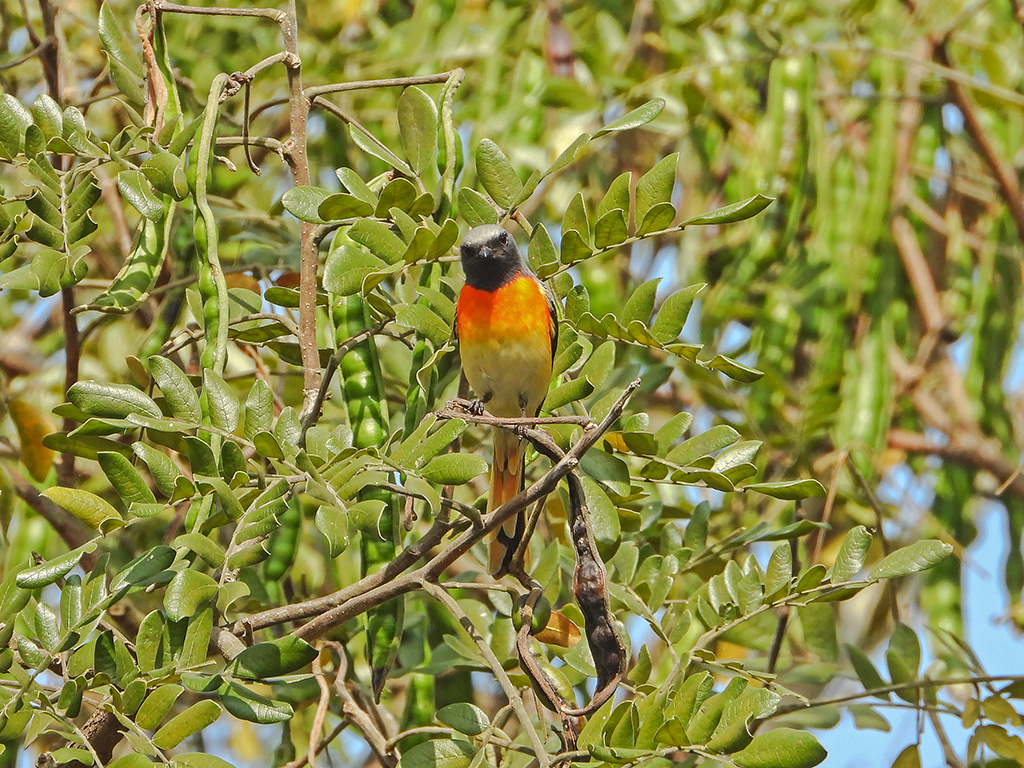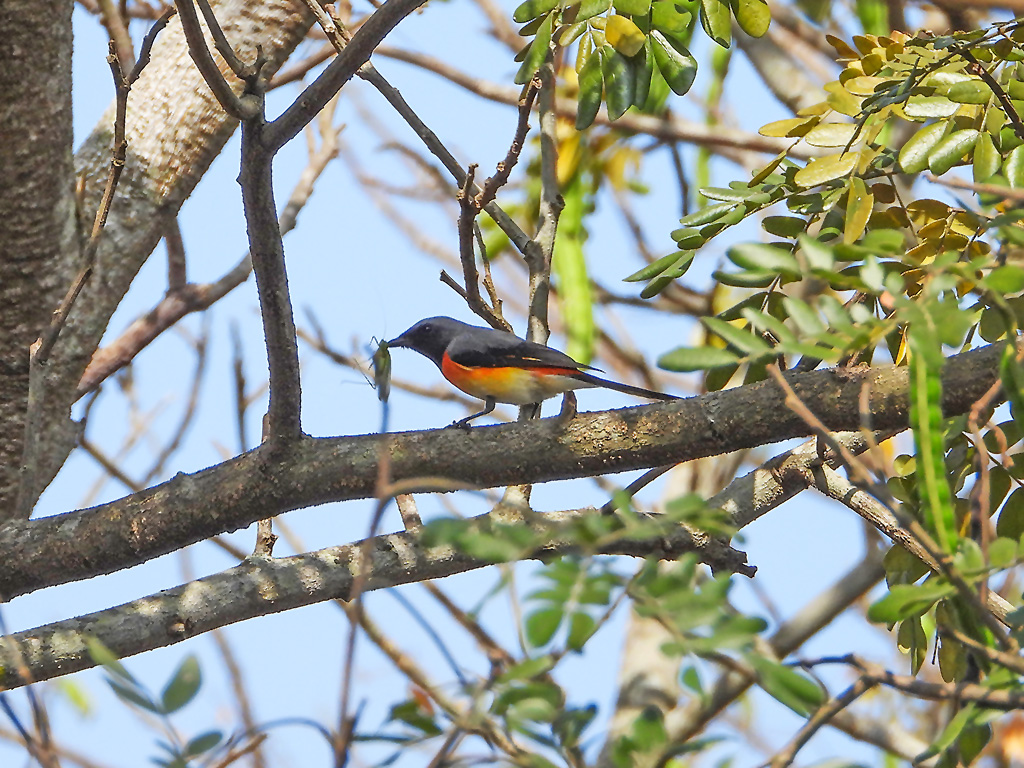| IUCN (International Union for Conservation of Nature): | Least Concern
|
|---|
| Approximate size(adult): | Length about 16–17 cm; weight ~15–20 g. A small, slender passerine with bright orange-red underparts and black upperparts in males; females are olive-grey above with yellowish underparts. The wings are black with white markings.
|
|---|
| Resident/ Migrate from: | Resident species across the Indian subcontinent and Sri Lanka; generally non-migratory but may move locally in response to food availability.
|
|---|
| Migrate to: | Non-migratory; remains within its range year-round.
|
|---|
| Breeding season: | March to July in India, peaking before and during the monsoon. Courtship involves singing, aerial displays, and mutual preening.
|
|---|
| Breed in: | Builds a small cup-shaped nest made of moss, cobwebs, and fine fibers, placed in forks of tree branches or shrubs. Clutch size is usually 3–4 eggs, incubated by the female, with both parents feeding chicks.
|
|---|
| Habitat: | Prefers open forests, scrublands, gardens, and wooded farmland. Often found in small flocks foraging actively in the mid-canopy.
|
|---|
| Diet: | Primarily insectivorous, feeding on caterpillars, beetles, flies, and other small insects. Hunts actively by gleaning and fluttering through foliage, often in mixed-species flocks.
|
|---|


